Are you about to purchase a new air conditioning system?
Perhaps you need to find out more about your existing one.
Efficiency and cost will be crucial aspects of your decision, and knowing enough before you make a purchase can keep you cool and save you dollars over the years. This guide covers everything you need to know.
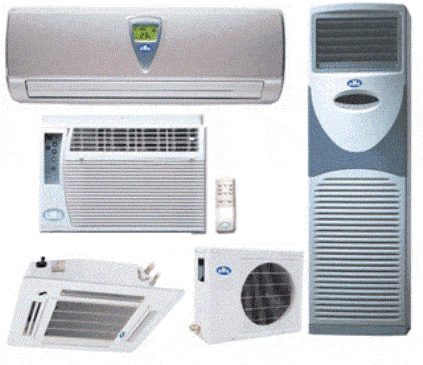
Types of AC Systems
There are different systems you can use to cool your home. Each one has a unique way of operating to keep your home cool during high outdoor temperatures.
Central Air System
A package unit that connects to the ductwork in your house to cool every room
Heat Pump System
A split system that uses an external pump to extract hot air and push in cool air using coils with a refrigerant.
Ductless/Mini-Split System
A split system that you mount on the wall and use to cool individual rooms to different temperatures.
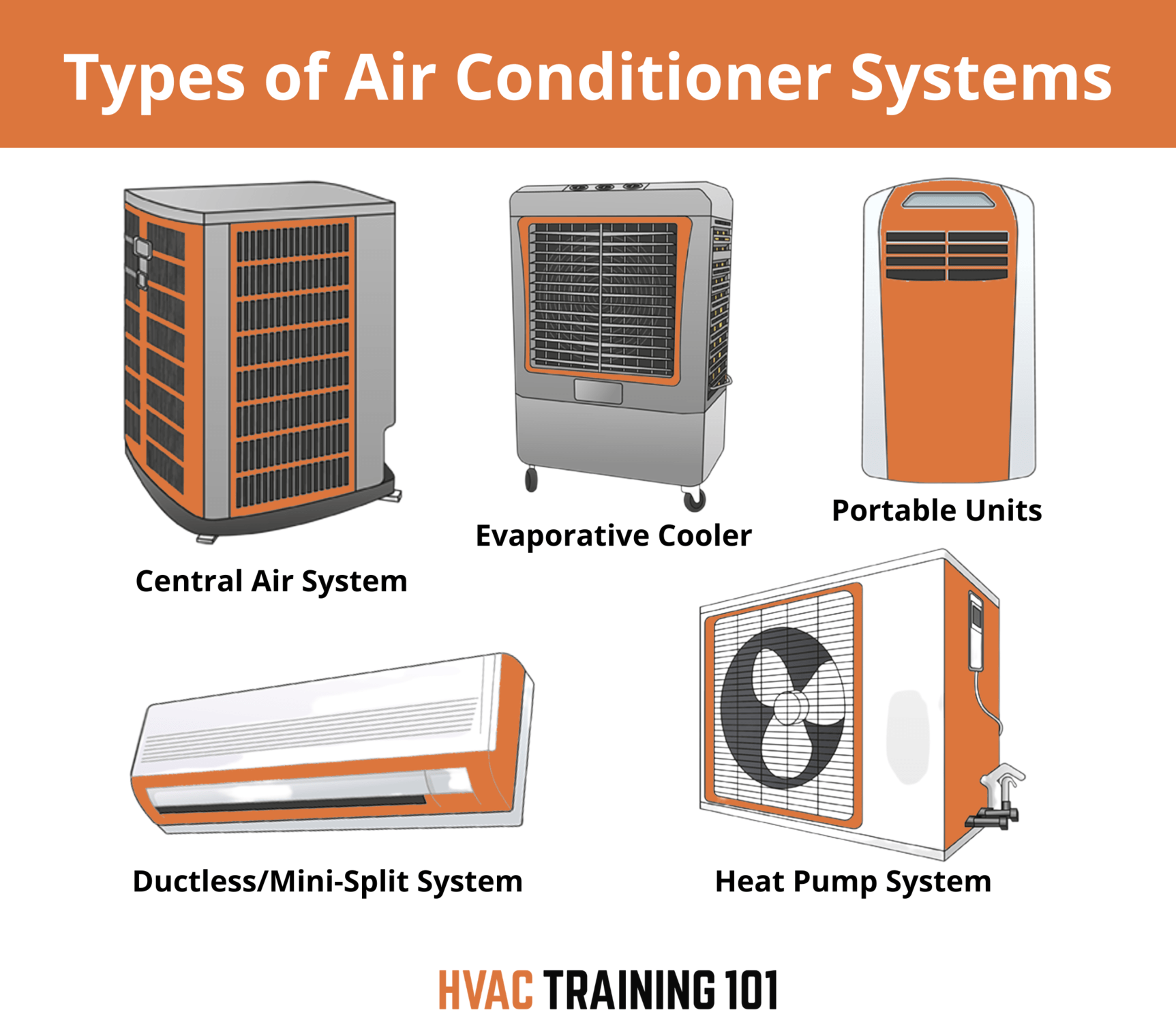
Room and Portable Units
These standalone units need ventilation through a window. They’re used as temporary solutions or to cool one room. You can move them around.
Evaporative Cooler
This system doesn’t use a refrigerant. Instead, it uses water to cool air and add humidity, which is why it’s suited to hot and dry climates.
Geothermal System
A new system that uses a piping loop under the earth to maintain a regular temperature in your house in summer and winter.
|
AC System |
Best For |
|---|---|
|
Central Air System |
Using ductwork to cool the whole house. |
|
Heat Pump System |
Mild climates where heating and cooling are required. |
|
Ductless/Mini-Split System |
Cooling individual rooms without ducts. |
|
Room and Portable Units |
Cooling without installation. |
|
Evaporative Cooler |
Hot and dry climates with no need for refrigerants. |
|
Geothermal System |
Long-term, energy-efficient solution for cooling and heating. |
Central Air System
Central air is a system commonly used to cool several rooms at once. It has a cooling compressor unit that’s stored outside. Fans and ductwork take that cool air and distribute it around your home. The warm air is carried back and is either expelled or passes through the unit to be chilled and is then recirculated.
The system uses a refrigerant, which is contained in a coil to provide cold air. It relies on two components: the ducts, which handle the air, and the unit, which contains the external condenser and compressor. You’ll need to already have ductwork in your home.
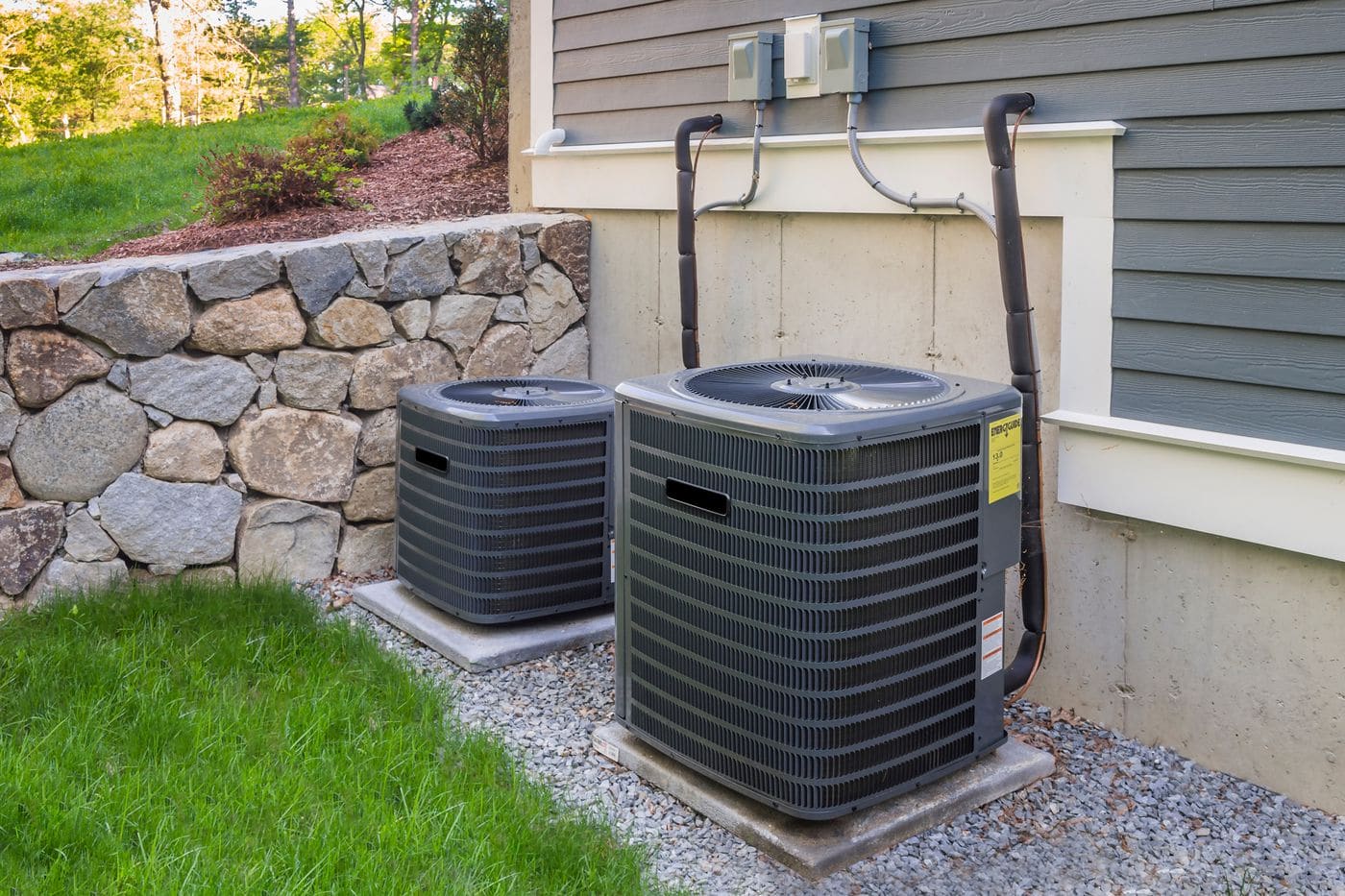
Advantages
- Uses ductwork, which many houses already have
- Cools many rooms at once
- Fast and effective environment control
Disadvantages
- Requires a professional to install
- High energy use
- Split system could mean issues with either component
Best For
Central air is best for those who want to regulate the temperature of several rooms in their home. If you have space for an external unit and already have ductwork in your house, this system would suit you.
For those looking to quickly and effectively control the humidity and heat in their whole home, a central air system is an efficient option. You’ll need to do a little planning, but most of the work is taken on by the professionals who will install it. If you’re looking for convenience and comfort this option makes sense.
Heat Pump System
Also known as air source heat pumps, these units use electricity to circulate either warm or cold air through the building. They also extract the warm air and push it outside, it works by concentrating the air. They work best in moderate climates, as the unit provides some heat in winter and cooling in summer.
Like the central air system, it relies on indoor coils, which absorb the heat, and an external unit, which expels the air. It uses a refrigerant, motorized fans, and ductwork to move air around and remove it. It then cools and dehumidifies it.

Advantages
- Low cost for use
- Provides heat and cooling
- Cools several rooms at once
Disadvantages
- High installation costs
- Better for moderate climates
- Requires professional installation
Best For
This system suits those who want air conditioning in several rooms. The main advantage of this type is that it’s a multi-purpose option. If you want heating in winter and cooling in summer using the same means, then the high installation but low running costs are ideal. It’s especially useful for those who don’t experience extreme cold or heat.
If you want to be comfortable all year and maintain a stable environment, an air source heat pump is an excellent choice. They can help control humidity as well as temperature, which adds to the impact this system can have.
Ductless/Mini-Split System
The first two systems we’ve outlined rely on ductwork in your house to pull in the warm air and distribute the cold. There are other options, such as the mini-split, or ductless, air conditioner. It works with external and internal units, which are mounted on the wall.
With this system, you can have several units in different locations to control the temperature in specific zones. Alternatively, you can use this option to cool just part of your home. These air conditioners use a refrigerant to extract and cool and are often operated with a remote or a smart controller.
Advantages
- Easy to install
- No need for ductwork
- Control temperature in one room
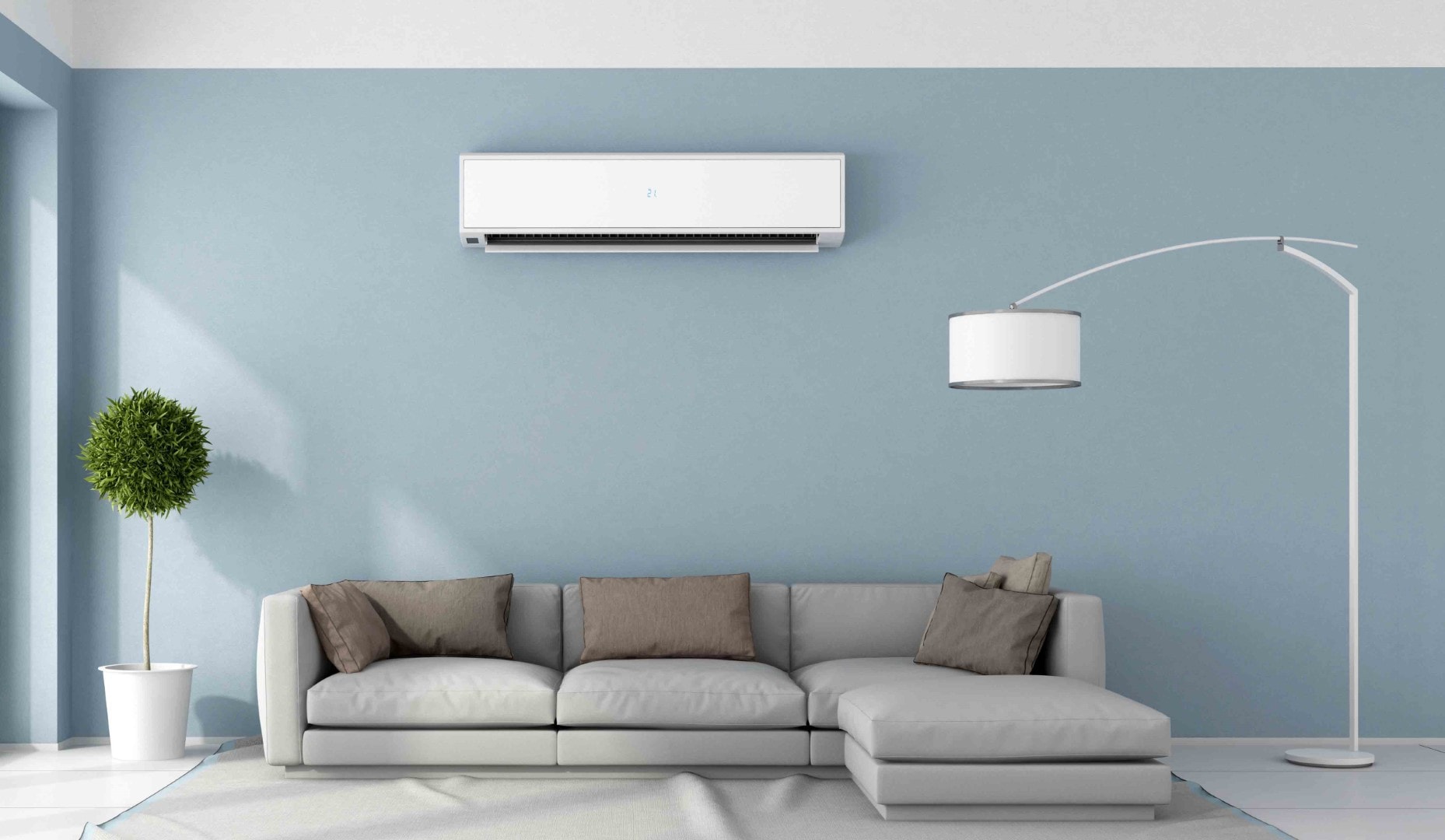
Disadvantages
- Doesn’t cool your whole house
- Wall-mounted units can spoil your home’s appearance
- Not as cost-effective as other systems
Best For
A mini-split system is best for those who don’t have ductwork. It’s also suitable for anyone only looking to cool one or two rooms in their home. For example, you can keep the bedroom cool at one temperature, and maintain a different environment in your living room.
This option is ideal for anyone in a hurry. Installation is straightforward, which means you won’t need much preparation and can have the system running within a few hours.
Room and Portable Units
These are self-contained units. They are internal and don’t have a second component that sits outside the building. Generally, you’ll have one large one per room, or you might have a smaller air conditioner that you can move around to different locations.
They use electricity to function, so you’ll need a power outlet. It’s free-standing but will need access to a window for ventilation. The evaporator fans are inside the machine, where it collects the air, cools it, and sends the warm air out through the exhaust.
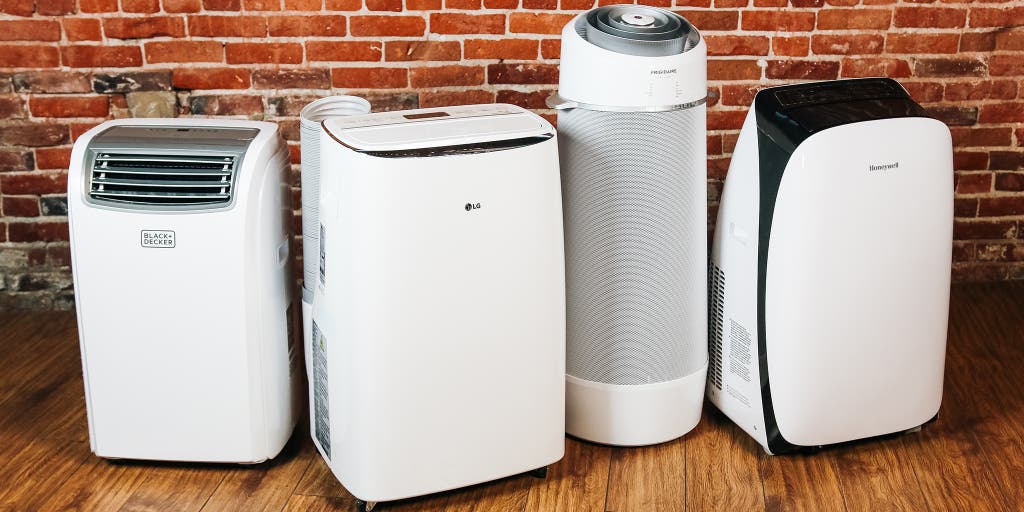
Advantages
- Cheap
- Can be moved to different rooms
- No installation required
Disadvantages
- Noisy
- Not effective at cooling large spaces
- Require window kits, which can let in heat
Best For
Portable air conditioners are a brilliant choice for temporarily cooling a space. For example, if you only get a short period of heat each year, it’s a convenient and cost-effective option. It’s an immediate solution to regulate the temperature.
Although they take up floor space, most are compact and equipped with wheels, so you can move them around with you to keep the room chilled wherever you are. It’s a useful option if you can’t install something permanent, such as when renting a property.
Evaporative Cooler
These systems are sometimes known as swamp coolers. They use a different method of chilling the air than other air conditioners. Instead of employing a refrigerant, they only use air and water. They’re usually found as standalone or wall-mounted units.
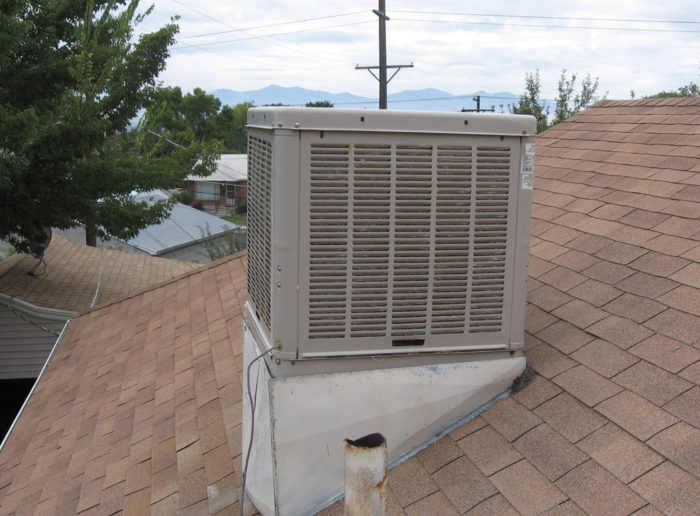
The hot air is pulled into the unit, where it passes above the water and is cooled. It’s then pushed back out into the room. Pads of moisture provide the chilling effect, which also makes this cooler a humidifier. For that reason, evaporative options work best in hot, dry environments.
Advantages
- Natural and effective system
- Doubles as a humidifier
- Low cost
Disadvantages
- Only suitable for dry environments
- Limited temperature control
- Usually requires you to add water to run
Best For
If you live in a hot and dry climate, an evaporative cooling system could be the best option for you. It is a natural and simple system that doesn’t require refrigerants. The installation and maintenance costs are usually less than other air conditioners.
This system adds moisture to the air, so swamp coolers are a good choice if you’re also looking for a humidifier. They also come as free-standing units, so will suit you if you want something simple that doesn’t require installation.
Geothermal System
An efficient and relatively new system, geothermal is becoming a popular option for heating and cooling homes by using the insulating properties of the earth. Most of the installation work happens underground.
At around 6 ft below the surface, the earth maintains a regular temperature of around 55°F. The system uses a heat pump and a loop of piping to push water through the earth, where it warms or cools. It then comes through pipes in your home to regulate the temperature.
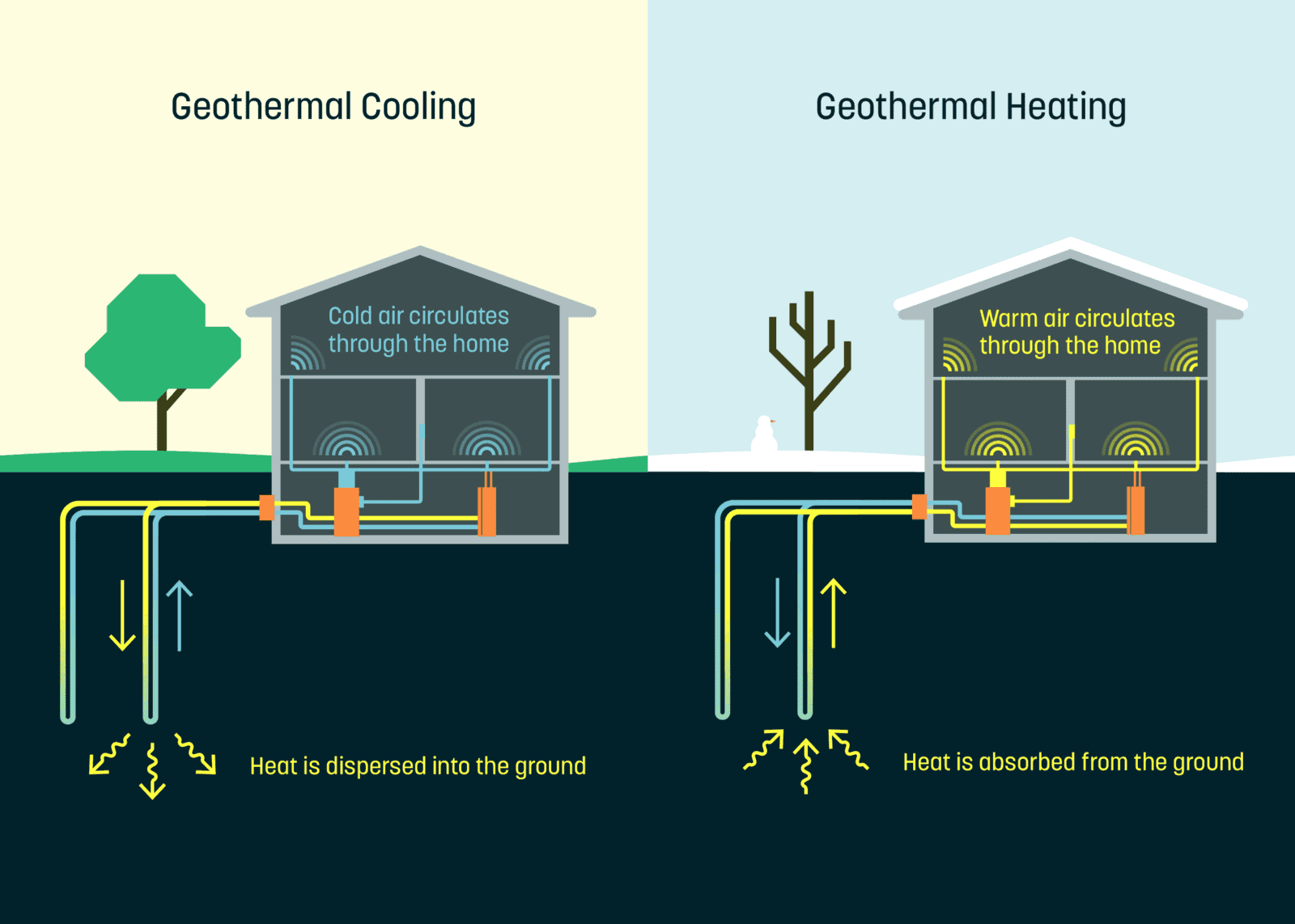
Advantages
- Energy-efficient whole house system
- Provides heating and cooling
- Sustainable
Disadvantages
- Limited temperature control
- High installation costs
- Requires space in the ground
Best For
If you want a system for your whole house that doesn’t rely on fossil fuels, then the geothermal option could be best for you. Although it requires a significant upfront investment, it’ll meet your heating and cooling needs all year.
This choice is definitely best for those that own their property and have space for the loop to be installed. If energy efficiency and sustainability are important to you, it’s a fantastic option. The long-term costs are also low.
Factors to Consider When Choosing an Air Conditioning System
Since there are several types of air conditioners, it’s useful to know the crucial elements that set them apart. We’ve listed the top four factors to consider.
Multi-purpose Product
Several systems can be used as more than an AC unit, as they also offer a form of heating. There are advantages and disadvantages to having a product with two functions. For example, the air source heat pumps do an adequate job of both functions but aren’t known for their exceptional cooling ability.
On the other hand, it saves you the hassle of maintaining two units. Another advantage is the space taken up, as you’ll be making the most of the ducts or pipes in your property to do both jobs. If providing heat in the winter isn’t a concern, you might want to focus more on the other factors.
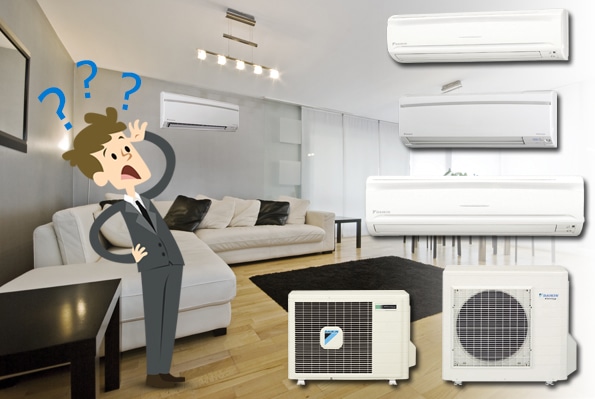
Climate Suitability
An essential consideration is whether the AC system is suited to your climate. Several options aren’t as effective at cooling in certain circumstances.
You’ll want to check whether the unit works well in mild or moderate climates, or whether it can handle more severe heat. Humidity is also an aspect, as some systems help to draw the moisture out of the air, while others, such as evaporative coolers, act as humidifiers.
Type of Installation
This factor has several aspects. One is that many systems require professional installation, which can involve planning and putting aside time, potentially disrupting your week. The system you choose might also affect how your property looks internally and externally. You may want to consider if there’s a less conspicuous option for installation.
Another element of the installation is the space available on your property. Several options require the space for an outdoor unit, or even for piping underground. Others will need a wall or floor space within the rooms that you want to keep cool.
Power Source
Not all air conditioning systems are powered in the same way. The power source may affect the placement of the unit, as well as the costs and efficiency of running it. Several of the options in this guide require electricity, which means you’ll need an outlet or some cables.
Efficiency and sustainability are also considerations when it comes to the power source. Fossil fuels are a common source of power. However, some options rely more on other methods, such as geothermal, which uses the earth’s heat, or evaporative coolers, which are a more natural and simple way of regulating the temperature.
Split Systems vs Packaged Systems – Comparison Overview
When it comes to air conditioners, you might see different terminology referring to the systems as split or package. They’re two different types, which we explain below.
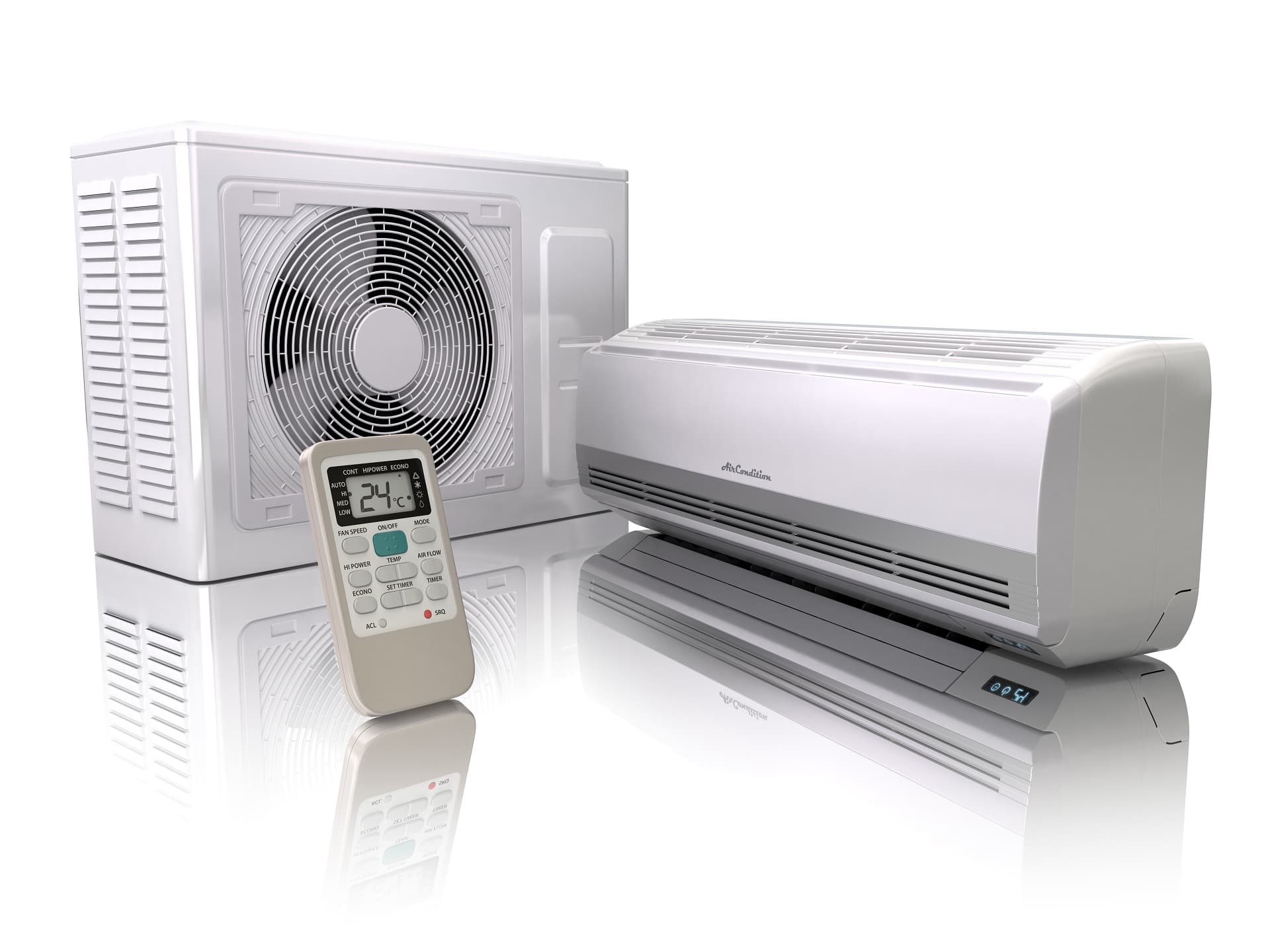
Split System
These systems have an indoor and an outdoor element. Usually, they’re best suited to those who have some space in their homes to accommodate them. However, that can mean wall units, which means floor space isn’t an issue.
The advantages of this type are that they are almost always more energy-efficient. Since there are two smaller components, you’ll often get more choice over the location. Typically, these need less maintenance.
Package System
Unlike the split system, these units come as an all-in-one option that’s put together at the factory. All of the parts are housed in one place and it connects to the ductwork that already exists in your home. Some options come with a fossil fuel power source, such as natural gas, built-in.
The advantages of packaged systems are that they’re easy to install. They are also considered less invasive, as there isn’t a physical presence inside your home. The unit sits outside while the ductwork is the internal aspect. For this reason, these systems are also less noisy.
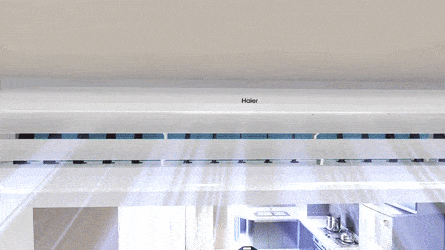
Conclusion
There are six main types of air conditioning systems. It’s crucial to consider the unit purpose, climate suitability, power source, and installation factors before choosing the right one for you. Many systems can be classified as split or package. Both have advantages, so it’s best to know which type you’re considering.
People Also Ask
Now that you know the different types and factors, you’re almost ready to pick a system. However, you might need more information or some support when making your decision. We’ve put together these commonly asked questions and their answers to help.
Geothermal systems are the most energy-efficient. You need some power, usually electricity, to help move the heat around with a pump. However, the temperature of the earth is what regulates the heat or cold. That makes it a brilliant option for the long term too.
You can install room or portable systems and evaporative coolers yourself. These units need to be positioned and plugged in. Some will require the installation of a window kit, which provides ventilation for an exhaust hose. Generally, these are easy to fit yourself and come with the unit.
No. Not all air conditioner systems use refrigerants, although it’s a common option. Evaporative coolers don’t need refrigerants. Instead, they use air passed over water or moisture pads to change the temperature. Geothermal systems use the earth’s temperature under the surface to cool your home.
Depending on the size of your RV, you could use a portable unit or a roof-mounted mini-split system. They provide cooling for smaller spaces and give you control over the temperature. If you use your RV in a hot and dry climate, you’ll find an evaporative cooler that will suit your needs.
